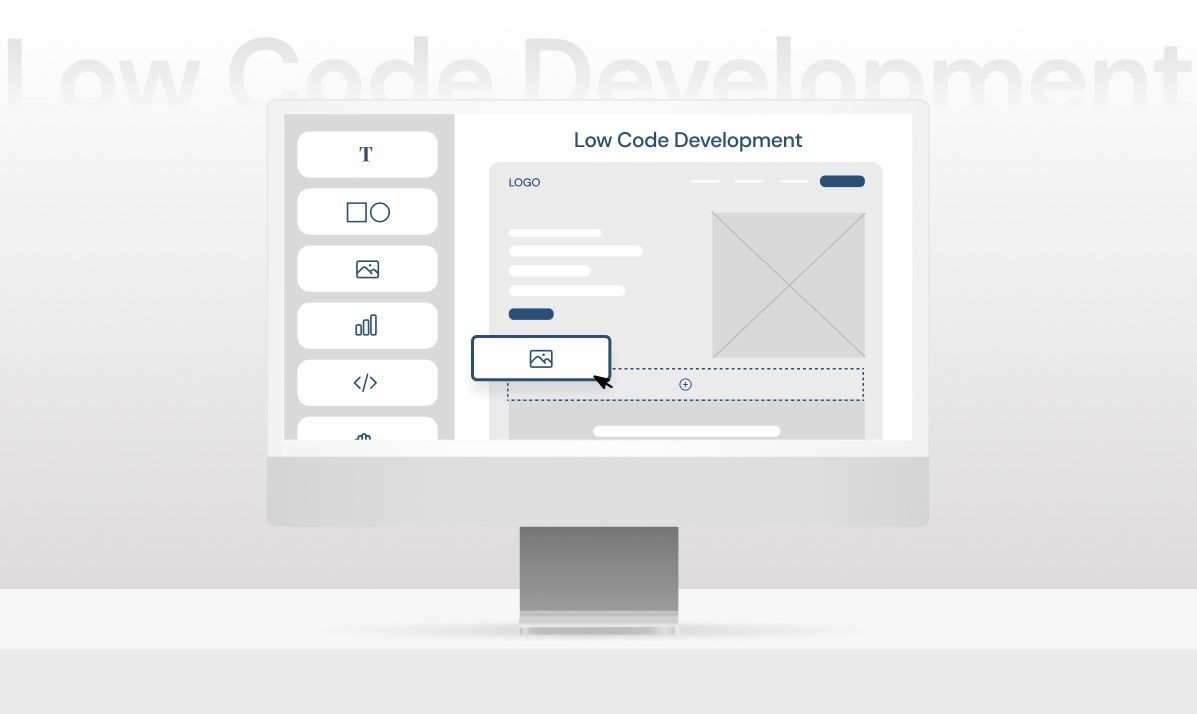The Rise of Low-Code Development: Revolutionizing Software Creation
In the fast-paced world of technology, businesses are constantly seeking ways to accelerate development processes and stay ahead of the competition. Low-code development platforms have emerged as a transformative solution, democratizing software creation and enabling a broader range of individuals to participate in the development process. This article delves into what low-code development is, its benefits, limitations, and its impact on the future of software development.
What is Low-Code Development?
Low-code development refers to the use of visual programming tools and pre-built components to create software applications with minimal hand-coding. These platforms provide a graphical user interface (GUI) where users can drag and drop elements to design applications, reducing the need for extensive coding skills. Essentially, low-code platforms streamline the development process, allowing users to build, deploy, and maintain applications faster and more efficiently.
Key Features of Low-Code Platforms
- Visual Development: Low-code platforms offer visual development environments where users can design applications using a drag-and-drop interface. This allows for rapid prototyping and reduces the complexity associated with traditional coding.
- Pre-Built Components: These platforms come with a library of reusable components and templates, such as user interface elements, data connectors, and workflow automation tools. Users can leverage these components to build applications without having to create every element from scratch.
- Integration Capabilities: Low-code platforms often include tools for integrating with various data sources, APIs, and third-party services. This ensures that applications can connect with existing systems and leverage data across different platforms.
- Scalability and Customization: While low-code platforms simplify development, they also provide options for custom coding when needed. This allows developers to extend the functionality of applications beyond the capabilities of pre-built components.
- Deployment and Maintenance: Low-code platforms facilitate easy deployment of applications to different environments, such as cloud or on-premises. They also offer tools for monitoring and maintaining applications, ensuring smooth operation and updates.
Benefits of Low-Code Development
- Accelerated Development: One of the primary advantages of low-code development is the speed at which applications can be built and deployed. By reducing the amount of manual coding, development cycles are shortened, allowing businesses to respond quickly to changing needs and market conditions.
- Reduced Development Costs: Lower development times and the ability to leverage pre-built components lead to cost savings. Organizations can save on labor costs associated with traditional coding and reduce the need for specialized development resources.
- Enhanced Collaboration: Low-code platforms enable greater collaboration between IT and business units. Business users, often referred to as "citizen developers," can participate in the development process, providing valuable insights and requirements that align with business goals.
- Improved Flexibility: With low-code platforms, changes and updates to applications can be implemented quickly. This agility allows organizations to adapt to new requirements, incorporate user feedback, and make iterative improvements.
- Empowerment of Non-Developers: Low-code development democratizes application creation, enabling individuals without extensive coding backgrounds to build functional applications. This expands the talent pool and fosters innovation from diverse perspectives.
Limitations and Challenges
- Complexity Limitations: While low-code platforms are powerful, they may not be suitable for highly complex or specialized applications. Certain advanced functionalities or customizations may still require traditional coding approaches.
- Vendor Lock-In: Organizations may become dependent on a particular low-code platform's ecosystem, making it challenging to migrate applications to other platforms or technologies.
- Security and Compliance: Ensuring that applications built with low-code platforms meet security and compliance standards can be challenging. Organizations need to carefully evaluate the security features provided by the platform and implement additional measures as needed.
- Performance Considerations: Applications developed using low-code platforms may not always match the performance of those built with traditional coding methods. Optimization and performance tuning may be necessary to achieve desired results.
The Future of Low-Code Development
The low-code development landscape is evolving rapidly, driven by advancements in technology and increasing demand for agile development practices. Here are some trends shaping the future of low-code development:
- AI and Automation Integration: The integration of artificial intelligence (AI) and automation tools into low-code platforms is expected to enhance their capabilities. AI-driven features, such as automated code generation and intelligent recommendations, will further streamline development processes.
- Increased Focus on Governance: As low-code development becomes more prevalent, organizations will need to implement robust governance frameworks to manage application lifecycle, security, and compliance. Platform providers are likely to offer enhanced governance features to address these needs.
- Expanded Use Cases: Low-code platforms are expected to support a wider range of applications, including more complex and industry-specific solutions. This expansion will drive greater adoption and integration across various business functions.
- Community and Ecosystem Growth: The low-code development community will continue to grow, with increased collaboration and sharing of best practices. Ecosystem growth will lead to the development of more third-party components, templates, and integrations, enriching the capabilities of low-code platforms.
Conclusion
Low-code development is reshaping the software creation landscape by making application development more accessible, efficient, and collaborative. While there are limitations and challenges to address, the benefits of accelerated development, cost savings, and increased empowerment of non-developers make low-code platforms a compelling choice for many organizations. As technology continues to advance, low-code development will likely play an increasingly central role in the future of software development, driving innovation and agility in the digital age.
 Waleed Ali Khan
Waleed Ali Khan